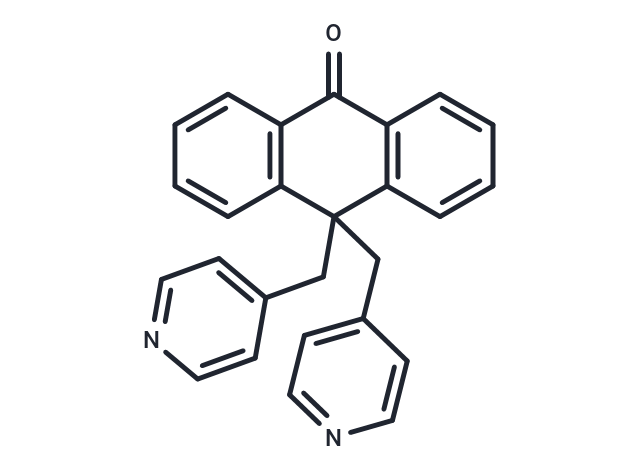Shopping Cart
Remove All Your shopping cart is currently empty
Your shopping cart is currently empty
XE991 is a novel and selective Kv7 (KCNQ) channel blocker.XE 991 dihydrochloride inhibits Kv7.1 (KCNQ1), Kv7.2 (KCNQ2), Kv7.2 + Kv7.3 (KCNQ3) channels, and M-current, and can be used for the study of neurological diseases.

| Pack Size | Price | USA Warehouse | Global Warehouse | Quantity |
|---|---|---|---|---|
| 1 mg | $35 | In Stock | In Stock | |
| 5 mg | $83 | In Stock | In Stock | |
| 10 mg | $133 | In Stock | In Stock | |
| 25 mg | $255 | In Stock | In Stock | |
| 50 mg | $433 | In Stock | In Stock | |
| 100 mg | $648 | In Stock | In Stock | |
| 1 mL x 10 mM (in DMSO) | $92 | In Stock | In Stock |
| Description | XE991 is a novel and selective Kv7 (KCNQ) channel blocker.XE 991 dihydrochloride inhibits Kv7.1 (KCNQ1), Kv7.2 (KCNQ2), Kv7.2 + Kv7.3 (KCNQ3) channels, and M-current, and can be used for the study of neurological diseases. |
| Targets&IC50 | [3H]-acetylcholine:490 nM |
| In vitro | XE991 and DMP 543 have EC50 values of 490 nM and 700 nM, respectively, for enhancing [3H] acetylcholine release from rat brain slices[2]. |
| Molecular Weight | 376.45 |
| Formula | C26H20N2O |
| Cas No. | 122955-42-4 |
| Smiles | O=C1C=2C=CC=CC2C(C=3C=CC=CC13)(CC=4C=CN=CC4)CC=5C=CN=CC5 |
| Storage | Powder: -20°C for 3 years | In solvent: -80°C for 1 year | Shipping with blue ice/Shipping at ambient temperature. |
| Size | Quantity | Unit Price | Amount | Operation |
|---|

Copyright © 2015-2025 TargetMol Chemicals Inc. All Rights Reserved.